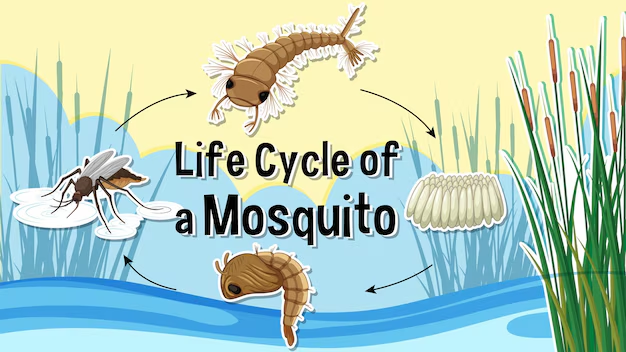The wormicide character of destroys worms in water

Understanding the Wormicidal Properties of Substances in Water
Waterborne diseases caused by parasitic worms are a significant health concern in many parts of the world, especially where access to clean water is limited. The presence of worms or their larvae in drinking water can lead to infections, often causing gastrointestinal issues and other health problems. Wormicides are chemicals or biological agents specifically designed to kill or neutralize these worms, making water safe for consumption. This article explores the wormicidal properties of various substances used to eliminate parasitic worms in water, their effectiveness, and their implications for public health.
1. What Are Wormicides?
Wormicides, also known as antihelmintics, are substances specifically designed to target and eliminate parasitic worms. These agents disrupt the worm’s lifecycle, rendering it inactive or dead, thus preventing it from infecting humans or animals that consume the contaminated water.
2. Why Worms in Water Are a Problem
Waterborne worms can cause various diseases in humans and animals. These parasites often spread through contaminated drinking water, and their presence can lead to severe health issues, particularly in areas lacking proper sanitation or water purification facilities. Drinking water contaminated with worms can lead to infections like schistosomiasis and other worm-induced diseases, especially in tropical regions.
3. Common Types of Worms Found in Water
Several types of parasitic worms can be found in contaminated water, including:
- Nematodes (roundworms)
- Trematodes (flukes)
- Cestodes (tapeworms)
4. How Wormicides Work
Wormicides are designed to target worms by interfering with their cellular functions, paralyzing or killing them. Depending on the type of worm, different wormicidal agents work through various mechanisms to break down the worms’ internal structures or inhibit their ability to reproduce.
5. Types of Wormicides and Their Mechanisms
Wormicides can be categorized into different types based on their active ingredients and mechanisms. The most commonly used wormicides include:
- Chemical Wormicides
- Natural Wormicides
- Biological Wormicides
6. Chemical Wormicides Used in Water Treatment
Chemical wormicides include chlorine, iodine, and other synthetic chemicals. These substances work effectively by killing worm larvae and eggs upon contact, making them some of the most widely used agents in water treatment facilities.
- Chlorine: Chlorine is a powerful disinfectant that can destroy most pathogens, including worms and their eggs, in water.
- Iodine: Commonly used for short-term disinfection, iodine can eliminate worms but may leave a residual taste in the water.
- Copper Sulfate: Sometimes used to kill parasites in water, though its usage is controlled due to potential toxicity.
7. Natural Wormicides and Their Effectiveness
Natural wormicidal agents are derived from plants and other natural sources, making them an environmentally friendly option. Some common natural wormicides include:
- Neem Extract: Neem has known anti-parasitic properties that can inhibit worm growth and spread in water.
- Garlic: Garlic is traditionally used for its medicinal properties, including its effectiveness as a mild wormicide.
- Papaya Seeds: Contain compounds that can act against parasitic worms, though further studies are needed to confirm their efficacy in water.
8. Biological Wormicides: A Growing Solution
Biological wormicides involve the use of other organisms or enzymes to target and eliminate worms. For example, bacteria like Bacillus thuringiensis produce toxins that can kill worm larvae without affecting humans, providing a biological alternative to chemical wormicides.
9. Case Studies: Successful Applications of Wormicides in Water
Numerous case studies show the success of wormicides in eradicating waterborne worms. For example, chlorination has been highly effective in eliminating schistosomiasis in areas with contaminated water sources. In communities with access to natural treatments, neem oil and garlic extracts have shown promising results as safe and sustainable wormicides.
10. Potential Side Effects and Concerns
While effective, wormicides can sometimes cause adverse effects if not used correctly. Chemical agents like chlorine can create byproducts that may be harmful if consumed in large amounts. Additionally, overuse of certain wormicides can lead to environmental pollution and resistance in worm populations.
11. Environmental Impact of Wormicides in Water Treatment
The environmental impact of using wormicides is an essential consideration. Chemical wormicides, if overused, can disrupt aquatic ecosystems, affecting non-target species. However, natural and biological wormicides generally have minimal ecological impact, making them a safer option for long-term use.
12. Advantages and Limitations of Wormicides
- Advantages: Wormicides offer effective, targeted solutions for eradicating waterborne parasites and ensuring safe drinking water.
- Limitations: Certain wormicides may cause side effects, resistance, and environmental issues.
13. Future of Wormicidal Treatments in Water
The future of wormicidal treatments in water purification involves developing safer, more efficient wormicides with minimal side effects. Innovations in natural and biological wormicides are also expected to become more widespread as they offer a more sustainable approach to parasite control.
14. Wormicide Safety and Regulation
The use of wormicides is regulated to ensure they are safe for human consumption and environmentally sustainable. Agencies like the Environmental Protection Agency (EPA) and World Health Organization (WHO) establish guidelines for acceptable levels of wormicides in water.
15. Conclusion: Wormicides in Water Treatment and Public Health
Wormicides play a crucial role in water treatment, helping to prevent the spread of parasitic infections and improve public health. While chemical wormicides are highly effective, natural and biological alternatives are gaining attention for their environmental benefits. As waterborne diseases continue to pose challenges worldwide, the development of safe and efficient wormicides will be integral to ensuring access to clean water globally.



